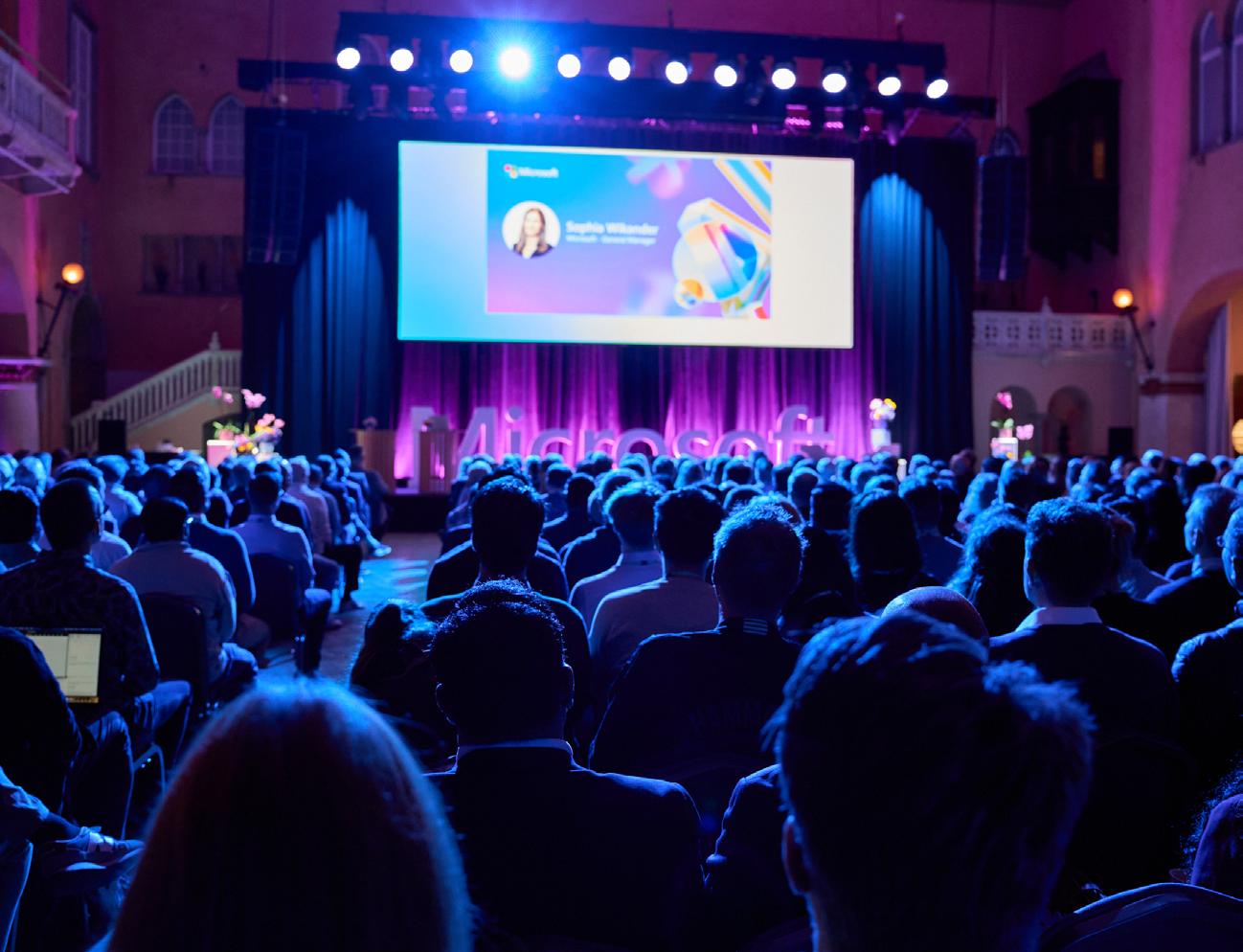



SOPHIA WIKANDER General Manager, Microsoft Sweden
The key question every leader should be asking: how quickly will you adapt?





SOPHIA WIKANDER General Manager, Microsoft Sweden
The key question every leader should be asking: how quickly will you adapt?
We are entering a new reality. AI is transforming everything – from healthcare and education to how businesses operate.
In our workplaces, it’s only a matter of time before every role will require a new type of kind of leadership. Already today, more and more people are managing AI agents that schedule meetings, conduct research, take notes, and proactively contact colleagues to get work done.
The key question every leader should be asking: how quickly will you adapt? And how do you ensure your employees stay competitive–and that your workplace remains attractive? In short, how do you prepare your workforce for the future?
Microsoft’s Work Trend Index is an annual, in-depth research report that analyzes global workplace trends and how technological change is shaping work environments and productivity.
This year’s report shows that 75% of knowledge workers use AI on the job. What’s especially interesting is that 78% of them are using their own AI tools rather than company-provided solutions –a trend known as “Bring Your Own AI” (BYOAI). This shows that many employees are taking the initiative and using the AI tools they find most effective, even though this can raise concerns around security and data protection.
The report also presents a transformative vision for the future of business, where AI is reshaping how we work and driving productivity gains we never thought possible. The report shows that 78% of Swedish business leaders believe AI will accelerate productivity, and 82% are confident they will use agents–tools that combine different AI tech-
AI is no longer the future – it is already here. This technology is transforming how we work, learn, communicate, and make decisions.
For the public sector, this presents a historic opportunity to improve social services, streamline operations, and respond to citizens’ needs in entirely new ways. The question is not whether AI will impact Sweden, but how much, and under what conditions.
Countries like the United Kingdom, Singapore, and Canada have already made significant progress. The UK is using AI to improve efficiency in healthcare and social services. Singapore has established a national AI governance framework to guide government agencies in ethical and secure use. Canada has implemented a dedicated directive for automated decision - making in the public sector, with a focus on transparency and accountability.
Sweden has taken important steps, including the AI Commission’s proposal for an investment of SEK 17 billion. But is it enough?
As other countries shift from strategy to action, we risk getting bogged down in debates and studies. This is no longer just a technology issue –it is a leadership issue. AI demands a new kind of leadership. One that understands that change management, skills development, and trust are essential for success. The goal is to foster innovation while also establishing structures for accountability, security, and inclusion. Leadership in the AI era requires making bold decisions in the face of uncertainty – and doing so with the well-being of citizens as the top priority.
Microsoft’s Work Trend Index 2024 shows that 75% of the world’s knowledge workers are already using AI in their daily work. The public sector cannot
nologies to perform more complex tasks – as digital colleagues within the next year.
To seize this opportunity and enable Sweden to remain at the forefront of innovation, we need strong leadership and fresh perspectives, as well as accessible training for everyone.
As one step to meet this need, Microsoft launched the AI-lyftet last year – a three-year initiative to train 250,000 people in Sweden in AI. So far, more than 100,000 people have begun their learning journey, and this is only the beginning.
But it isn’t enough. More initiatives are needed, and more companies and organizations must step up with clear strategies for both AI management and skills development.
We all share a responsibility in this – together, we must raise the level of digital literacy so more people can benefit from the opportunities technology offers. In Sweden, we cannot allow knowledge gaps to grow.
Together, we can ensure that Sweden remains competitive and innovative. W
33.7
BILLION

JENNICA ANDERSSON Enterprise Public Sector, Microsoft Sweden
afford to stand on the sidelines of this development. We need to strengthen our organizations – not only technically, but also culturally and strategically. Sweden’s future depends on the choices we make today. The public sector has a key role – not only in driving innovation, but in ensuring that AI is used responsibly, equitably, and for the benefit of society as a whole. The question is not only what we stand to gain – but what we cannot afford to lose. W
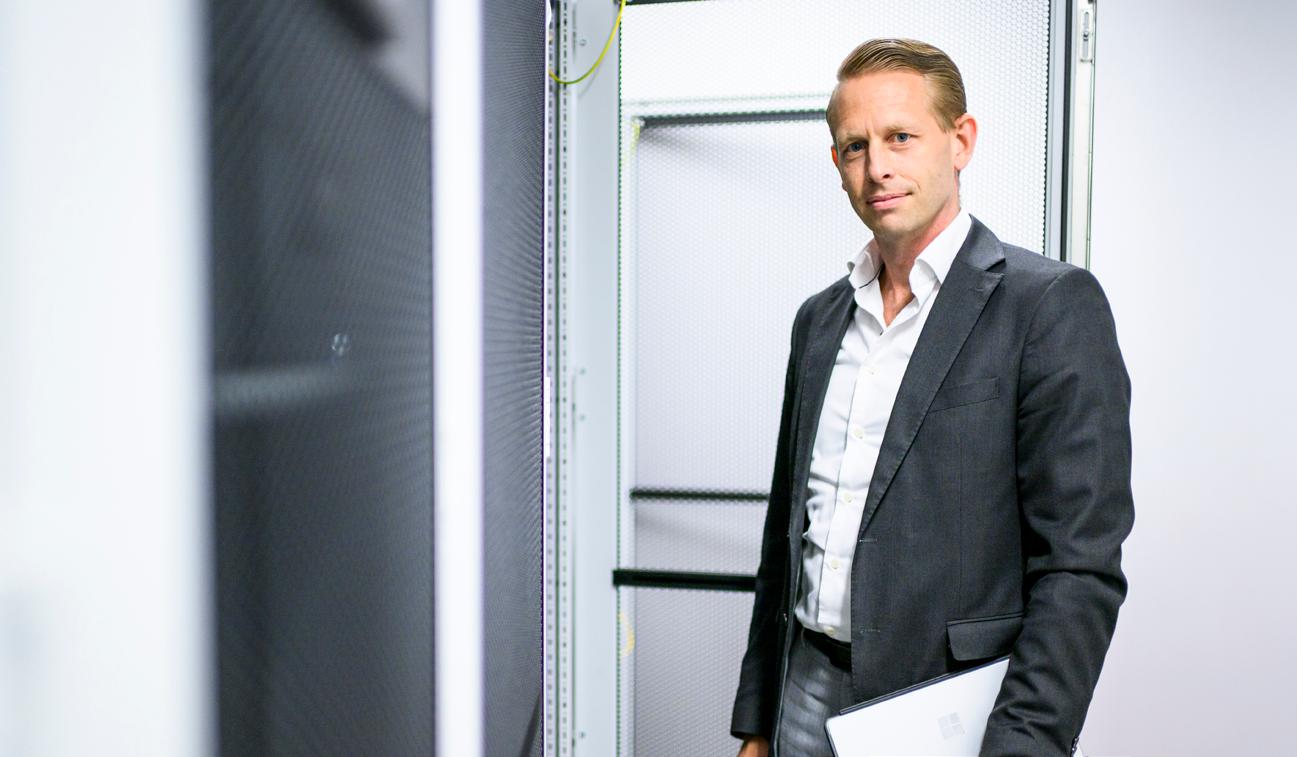
A Russian hacker group targeted the municipality of Bjuv. The large-scale cyberattack marked the launch of a robust security initiative and new investments in IT protection.
Now, municipalities in northwestern Skåne are joining forces to protect themselves from future cyber threats.
Just over a year ago, a major cyberattack by the Russian hacker group Akira plunged Bjuv’s municipal IT department into crisis mode. The attack, which targeted the municipality’s outdated and insecure VPN, led to long hours and heightened anxiety among IT staff and organizational leaders.
“It was chaotic, but we learned an incredible amount in a short time,” says Thomas Nilsson, Head of EttIT – an IT partnership involving the municipalities of Bjuv, Klippan, Perstorp, Åstorp, and Örkelljunga.
Using trial licenses for Microsoft Defender for Cloud, quickly provided by Microsoft, IT technicians discovered that not only Bjuv but also two of the five partner municipalities were under active attack. Thanks to swift action, the threats were neutralized, allowing operations to return to normal within days.
More resources and greater understanding
The attack prompted a wake-up call for municipal leadership. Before the incident, the IT department’s requests for more resources were often denied, but afterward, they were allowed to keep the new
security licenses and hire three additional staff to bolster long-term cybersecurity.
“Technology is important, but human expertise is essential. Now we can work more proactively, including by providing training for municipal staff,” says Thomas Nilsson.
Säkerhetslyftet provides new tools
After the attack, Thomas Nilsson joined Microsoft’s Säkerhetslyftet initiative, which supports the public sector through initiatives such as cyber security training and webinars.
“Säkerhetslyftet has given us a better understanding of how we can take preventive action. Investing in security and building internal expertise is critical to strengthening organizational resilience,” he explains.
Thomas Nilsson also emphasizes the importance of learning from others and encourages more people to participate in Säkerhetslyftet to benefit from shared experiences.
“Security work is a daily task”
One year on from the attack, the organization has made significant gains in both maturity and knowledge. Although it is impossible to fully protect against new threats, Thomas Nilsson believes the municipality is much better prepared today.
“Our recommendation is to always stay curious, be proactive, and treat security work as a daily responsibility. In a constantly shifting threat landscape, we have to keep updating our tools, skills, and working methods.” W
THOMAS NILSSON'S
2 3 1
Security is worth the investment. It’s far too important to overlook.
Understand what the starting phase looks like. Set realistic expectations for how long it takes to build a strong security foundation.
Have dedicated staff. Invest in employees who are passionate about security and can build expertise within the organization.
Interested in joining Microsoft’s Säkerhetslyftet initiative for the public sector? Learn more here.
“WE’RE

AI-lyftet is an initiative designed to equip more Swedes with essential skills at a time when artificial intelligence is already transforming everyday life. Led by Microsoft, together with partners including Linköping University (LiU), the initiative aims to pave the way for a new era of digital competence – and spark a movement that drives positive change.
“It’s about preparing people for new opportunities, not just new technologies,” says Sophia Wikander, General Manager at Microsoft Sweden.
To help Sweden take the lead in digital development, AI-lyftet has been launched as a national initiative. The goal is to provide individuals and organizations with the skills, tools, and inspiration they need to understand and use AI. The ambition is to train at least 250,000 Swedes in AI – from the general public to business leaders – and in doing so, accelerate the inclusive and sustainable adoption of AI in Sweden.
“AI-lyftet is a response to the growing need for AI skills across society – students, professionals, decision-makers, and policymakers. The aim is to make AI accessible to everyone, regardless of their background. We want to spark curiosity, build knowledge, and drive real change,” says Sophia Wikander.
An advisory board with representatives from the public sector, academia, and industry acts as a sounding board and contributes valuable insights.
Jan-Ingvar Jönsson is President at Linköping University:
“For Linköping University, AI is a crucial issue for the future. That’s why we’re committed to helping raise AI skills across society. The need spans all sectors–and it’s urgent. Sweden can’t afford to
Understanding AI should no longer be a privilege for the few.
remain on the sidelines. At Linköping University, we’ve long worked in close collaboration with industry and the public sector. Together, we’re now taking the next step: designing AI training programs that meet today’s knowledge demands.”
The initiative: AI knowledge for everyone
Two key barriers to unlocking AI’s full potential have been identified: the cost of training and a lack of qualified talent. By offering free education through a broad network of partners, Microsoft aims to make AI knowledge available to all. The vision is for technology to close – rather than widen – gaps in society.
“AI initiatives that focus only on technical skills or narrow corporate interests won’t strengthen Sweden’s global competitiveness. The advisory board and AI-lyftet aim to create a cohesive,
nationally led, values-driven AI movement – one where access to knowledge leads to in-demand skills,” says Binette Seck, Co-Founder of Changers Tech and chair of the Advisory Council (Insiktsrådet).
“Understanding AI should no longer be a privilege for the few. Together, we’re building the foundation for a transformation that reaches all of society. It’s about democratizing insight, anchoring AI development, and making sure that the success of AI is something we shape together.” W

Jan-Ingvar Jönsson, President, Linköping University

Participants gain a basic understanding of what AI is and how it works. This step is about inspiring people and showing how AI affects us – in the classroom, office, healthcare, and industry. The goal is to view technology as an opportunity for everyone, rather than a threat, and to foster a sense of shared involvement in AI’s development.
This step highlights the importance of leadership and change management. To succeed with AI, organizations need to build a culture where everyone feels included and can contribute to progress. Leaders are encouraged to take initiative, experiment with new ideas, and involve the entire organization in the transformation journey.
Participants learn how to apply existing AI tools and solutions. The aim is to make technology accessible to all and show how AI can be used in everyday scenarios – driving innovation and new ways of working.
Here, participants design their own AI solutions to meet specific needs. The focus is on innovation – creating practical solutions for the future that make a real difference.
Region Halland is responding to rising cyber threats with new security solutions and artificial intelligence (AI). By modernizing its IT environment and working proactively, the region aims to protect both residents’ data and critical public services.
“It’s important that we can quickly respond to incidents and that we have the right tools to prevent attacks,” says Fredrik Gustavsson, Chief Information Security Officer at Region Halland.
With more than 340,000 residents and responsibility for areas including healthcare, Region Halland has a critical responsibility to handle sensitive information securely.
To address the growing threats, the region chose to implement Microsoft Security as an integrated platform for improved oversight and protection. Leveraging Microsoft’s solutions alongside existing tools has strengthened the IT environment, enabling
quicker threat detection and a more proactive approach to security.
“We needed a solution that could give us a comprehensive view of our security posture while also being flexible enough to meet future challenges,” says Fredrik Gustavsson.
Cyber threats such as data breaches and phishing attacks continue to increase in both scale and complexity, and the trend shows no signs of slowing down. New threats and innovative attack methods require continuous development and reinforcement of security efforts.
“We needed a robust platform that could withstand everything from power outages to sophisticated cyberattacks. At the same time, we wanted better insight into the threats and risks we actually face.”
The result of the collaboration with Microsoft has been an improved security profile, faster threat identification, and a more proactive approach to digital security.
The next step is to begin using AI as an integrated part of security operations. Microsoft’s security
solutions include several AI-powered features that can further enhance the ability to automatically identify and respond to threats.
“AI accelerates response times by enabling real-time automated threat identification and mitigation. It has the potential to take our security work to an entirely new level.” W
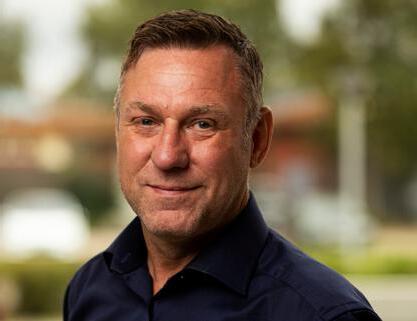

In just one year, the Prince Couple’s Foundation has reached millions of children through Dexi Ville, its literacy-boosting Minecraft Education game.
By exploring a digital Swedish village and engaging in accessibilityadapted mini-games, children –especially those with dyslexia – gain new opportunities to learn, grow, and feel included.
Accessibility tools and digital support are central to the initiative and have been integrated to address a wide range of children’s needs. Dexi Ville is a custom-built world within Minecraft, created to strengthen children’s reading skills and working memory through a close collaboration between the Prince Couple’s Foundation and Microsoft. Since its launch in May 2024, the game has been downloaded more than 2.6 million times globally. Schools have adopted the game as a complement to traditional reading instruction, helping more children discover the joy of reading.
therapists, and individuals with personal experience of dyslexia, to ensure the games are genuinely effective.
“It is extremely important to us that everything we do is of high quality and grounded in research. We have developed a research overview and tested the games with both children and adults,” explains Helene Öberg.
Study visit to Seattle – AI and digital safety In March, the Prince Couple’s Foundation, together with its founder Prince Carl Philip and representatives from Microsoft, universities, and colleges, visited Seattle to learn more about AI and digital support tools.

“One highlight was a visit to a local school for students with dyslexia, where we saw how AI supports accessible learning environments.”
The study trip culminated with a visit to Microsoft’s Cyber Crime Center, where participants gained insight into the extensive efforts that follow a hacker attack and extortion attempt, and where it can also be children’s and young people’s identities and data that have been leaked.
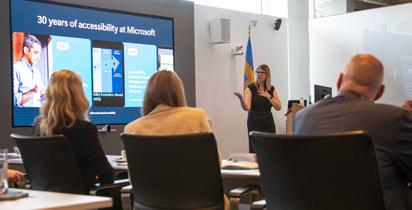
COLLABORATION BETWEEN
THE PRINCE COUPLE’S FOUNDATION AND MICROSOFT
JOINT GOAL:
The collaboration is based on a shared vision that every child should have the right to be themselves and the opportunity to reach their full potential.
DEVELOPMENT PROCESS:
“Dexi Ville is by far our biggest and most impressive project. It’s incredible to see how well it’s been received – and how many children it’s been able to support,” says Helene Öberg, Secretary General at the Prince Couple’s Foundation.
Grounded in research
“Our focus has been on creating something that truly works for children with dyslexia – and we’ve found that many others are also benefiting from the game. Minecraft is a platform that most children are already familiar with, which makes it easy to reach a wide audience.
Dexi Ville is backed by extensive research and quality assurance work. The Prince Couple’s Foundation has worked with experts from organizations such as RISE, as well as educators, speech
“We’re constantly navigating new challenges in digital life and it’s important that both children and adults receive support in creating a safe online environment,” says Helene Öberg.
In everyday life back in Sweden, the foundation continues to develop Dexi Ville and to work toward a safer digital environment for children and young people. Through initiatives like näthatshjälpen. se and targeted education efforts for schools and adults, the Prince Couple’s Foundation aims to provide more tools for managing and preventing online hate.
“Our goal is for all children to feel safe and included – at school, online, and in the digital gaming world. We also want to help adults understand how to talk to young people about digital challenges and how to support them when needed,” says Helene Öberg. W
Dexi Ville has been developed through close cooperation between the Prince Couple’s Foundation, Microsoft, and a team of experts. RISE has contributed quality assurance and research reviews.
TECHNICAL PLATFORM:
Microsoft provided Minecraft Education –available in 115 countries – along with technical support to enable development of
INTERNATIONAL KNOWLEDGE EXCHANGE:
The collaboration has included study visits and dialogue on AI and digital safety, including a joint trip to Seattle and meetings with schools and experts.
Östgötatrafiken migrated its IT infrastructure from an on-premises server hall to the cloud with a clear goal: to make public transportation safer, smoother, and more innovative.
“Ultimately, this translates to a better experience for our passengers,” says Carin Carelind, Head of IT at Östgötatrafiken.
Each weekday, Östgötatrafiken’s fully fossil-free public transit travels a distance equivalent to more than two trips around the globe. Reliable, secure IT operations are critical to maintaining efficient transit services.
After years of relying on a physical server hall, the organization began a substantial technological shift in 2018. A key part of this development has been the collaboration with Microsoft and the Azure cloud platform, as well as partnerships with other
providers. Step by step, Östgötatrafiken has migrated its infrastructure to the cloud.
“We developed a new cloud-based ticketing and payment system together with other counties. That was the starting point for the journey we’re now completing,” explains Zeraldin Hajdarevic, Chief Technology Officer and Project Manager.
From server hall to the cloud
A strong commitment from leadership has been
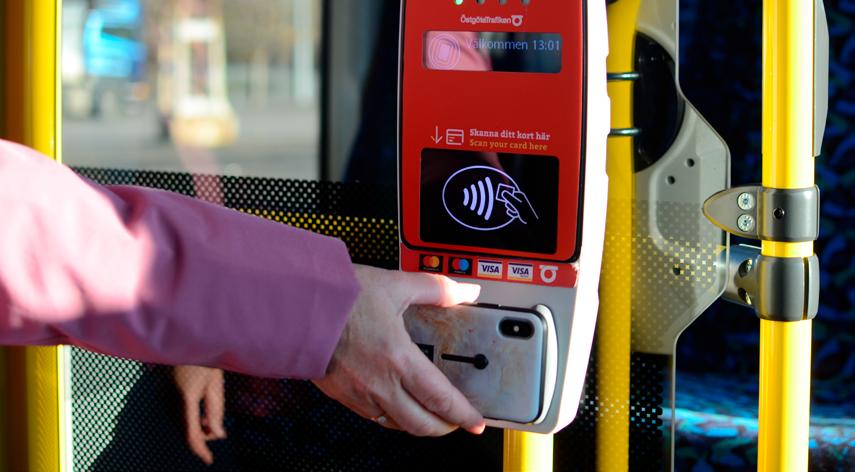
Photo: Karolina Wiborn
Automate
crucial to making this transition possible.
“We wanted to create a more secure and better system for our customers, and the management team showed early curiosity and understanding of the benefits. We’ve had strong support from start to finish,” says Carin Carelind.
By adopting a cloud solution on Microsoft Azure, Östgötatrafiken has achieved a more secure and flexible IT environment. Built on a Zero Trust security model, the platform isolates and protects different parts of the system – reducing the risk of unauthorized access.
“We can compare the new environment to a house with many locked rooms. There’s no master key that opens everything, which provides much higher security,” explains Carin Carelind.
In addition, Östgötatrafiken can now choose where in Europe its data is stored and quickly scale up or down as needed.
“We’re flexible and no longer limited by a physical server hall,” says Zeraldin Hajdarevic.
A major advantage is that new features can be developed and launched more quickly.
“We can release new versions and features much more often,” says Carin Carelind.
With the new platform, Östgötatrafiken is looking ahead to more digital innovations, including AI solutions for traffic planning and route optimization.
“We’ve built an environment that gives us the flexibility to begin working with AI solutions. Azure is a future-ready platform, and with its expanding AI capabilities, we can deliver even smarter solutions for our customers,” says Carin Carelind. W
1. What value can AI offer the public sector?
2. What do you think is required for Sweden to achieve its goal of becoming the world leader in leveraging AI opportunities?
JESSICA STEGRUD
1. “Improved resource utilization, smarter case management, and better analytical support. It’s important that AI not be used to replace direct interaction between citizens and government agencies in situations where human judgment, empathy, and due process are essential.”

2. “A broad set of complementary measures. According to the AI Commission, the necessary components of a well-functioning Swedish AI ecosystem are electricity, telecommunications, computing power, data, security, cutting-edge research, access to international AI resources, AI skills for everyone, innovation and venture capital, as well as leadership.” W

Cyber threats and AI-driven attacks demand faster decision-making and greater capabilities. The Swedish Armed Forces are investing in new technology and emphasize that collaboration is essential for Sweden’s security.
We are living in a time of heightened security concerns, with war in Europe and an aggressive neighbor to the east. The threat landscape is rapidly shifting – and for the worse.
Sophisticated adversaries are using artificial intelligence and advanced decision-support systems to act more quickly and with greater precision.
“In this evolving threat landscape, we’re seeing cyberattacks that are becoming increasingly sophisticated and targeted. That means we have to stay one step ahead and continually develop our capabilities,” says Per-Ola Johansson, Deputy Commander of the Swedish Armed Forces Telecommunications and Information Systems Command (FMTIS).

Per-Ola Johansson, Deputy Commander of the Swedish Armed Forces Telecommunications and Information Systems Command (FMTIS).
Adversaries are collecting enormous amounts of data, Per-Ola Johansson notes.
“So opting out isn’t an option.
To fulfill its mission of protecting Sweden and our allies, the Swedish Armed Forces must keep pace with rapid technological advancement. And that pace is accelerating. A concrete example of how quickly data volumes are growing can be seen in aircraft systems.
“If you convert the quantity of data a JAS aircraft collects during a standard mission today into distance, it would take you one kilometer. The new Gripen 39 E covers 8,000 kilometers,” says Per-Ola Johansson.
However, technological capability isn’t just about protecting our own systems – it also involves being able to share insights and situational awareness in real time with our allies.
AI and analytics are critical for operational effectiveness
To manage and extract valuable information from these vast data volumes, technologies like AI and data analytics are essential. The Swedish Armed Forces collect large amounts of information every day from sensors, systems, and platforms. This information must be analyzed quickly to be operationally useful.
“By using AI in various forms, we’ll be able to identify anomalies in the current situation, giving us the ability to respond more quickly to the next incident.”
Automation and rapid response capabilities will therefore be crucial.
“We need to be able to address what’s happening on the ground as quickly as possible.”
Security should be built into technology from the start
Åsa Kidman, Customer Security Officer at Microsoft Sweden, emphasizes the importance of building security into technology from the beginning – not as an afterthought.
“This transformation, using modern technology, starts with a security mindset. It’s about using applications that are secure by design,” she says.
Collaboration is essential for national security But technology alone isn’t enough. The Swedish Armed Forces cannot build the necessary digital capabilities on their own. Collaboration with other stakeholders is crucial.
“To strengthen our capabilities and protect our

Watch the video about their AI initiative here

nation and our allies, we need a resilient civil society. We rely on collaboration with other public agencies, academia, and especially the private sector,” says Per-Ola Johansson.
The AI developed by Microsoft is built on trillions of signals. It’s an enormous capacity that the Swedish Armed Forces want to leverage.
“Today’s challenges require collaboration – we cannot succeed alone.”
The people behind the systems are just as important as the technology Technology is not just a tool – it is a core component of Sweden’s national security infrastructure. However, it involves not only systems but also the people who operate them.
That is why the Swedish Armed Forces are actively recruiting and developing personnel with the right skills, and working to create a culture where security is embedded throughout the entire lifecycle.
“We need to be able to manage our systems securely, from design to operation. That requires everything from documentation to active patching, monitoring, and logging – every day,” says Per-Ola Johansson.
We’re building the digital defense of the future together
Together with partners like Microsoft, the Swedish Armed Forces are developing the capability to protect Sweden and its allies – at a historic moment when the security situation hasn’t been this serious since World War II.
“We have to work together, both nationally and internationally, to stay one step ahead of those who wish to harm us. Collaboration with partners like Microsoft gives us both expertise and technological advantages that make us stronger in digital defense,” says Per-Ola Johansson. W
1. What value can AI offer the public sector?
2. What do you think is required for Sweden to achieve its goal of becoming the world leader in leveraging AI opportunities?
MALIN ÖSTH
Member of The Committee on Transport and Communications, Left Party

1. “Increased accessibility and public benefit.” AI can take over routine tasks in healthcare, allowing medical staff to devote more time to patients, or help reduce processing times at government agencies. Freeing up time – without reducing staffing – would strengthen public services and could improve working conditions, such as enabling shorter hours with maintained pay.”
2. “Sweden’s vast amount of public data is a goldmine that should be used appropriately, especially so we can address challenges in areas such as welfare and climate change.” W

Spokesperson for business policy, Christian Democrats
1. ”AI has the potential to fundamentally transform and improve the public sector.” The goal is to streamline operations and free up resources for tasks that genuinely require human presence and expertise. A study by Implement Consulting Group suggests that, in the long term, generative AI could increase Sweden’s GDP by SEK 500 billion. The public sector represents a significant share of this – about SEK 125 billion – which underscores the major opportunities to create both economic and societal value.”
2. “We need to raise AI literacy not only among technical experts, but also among decision-makers, salaried employees, and citizens.” AI must become a tool that is broadly understood and used across society. We also need a stronger investment climate and must remove both legal and technical barriers to data sharing and AI deployment. Finally, collaboration between government, business, and academia is essential.” W
Spokesperson for cybersecurity and digitalization, Center Party

1. “AI is a technology with enormous potential for the public sector, capable of delivering substantial efficiency gains. By automating administrative processes and routine tasks, we can free up resources for work that truly makes a difference for people. We need to reform systems, retrain staff, and develop new working methods.”
2. “AI should be used to advance values such as freedom, transparency, and democracy. To succeed, we need a clear national direction – political leadership that treats AI as a societal priority. We also need access to secure, open data. Currently, there is no national data strategy or structure for collecting and sharing data responsibly. In addition, we need to develop our own digital infrastructure. The public sector must be empowered to test new approaches. Policy should lead the way and take a stance on issues such as AI in schools. And AI must be made accessible to more people – not just technical experts.” W

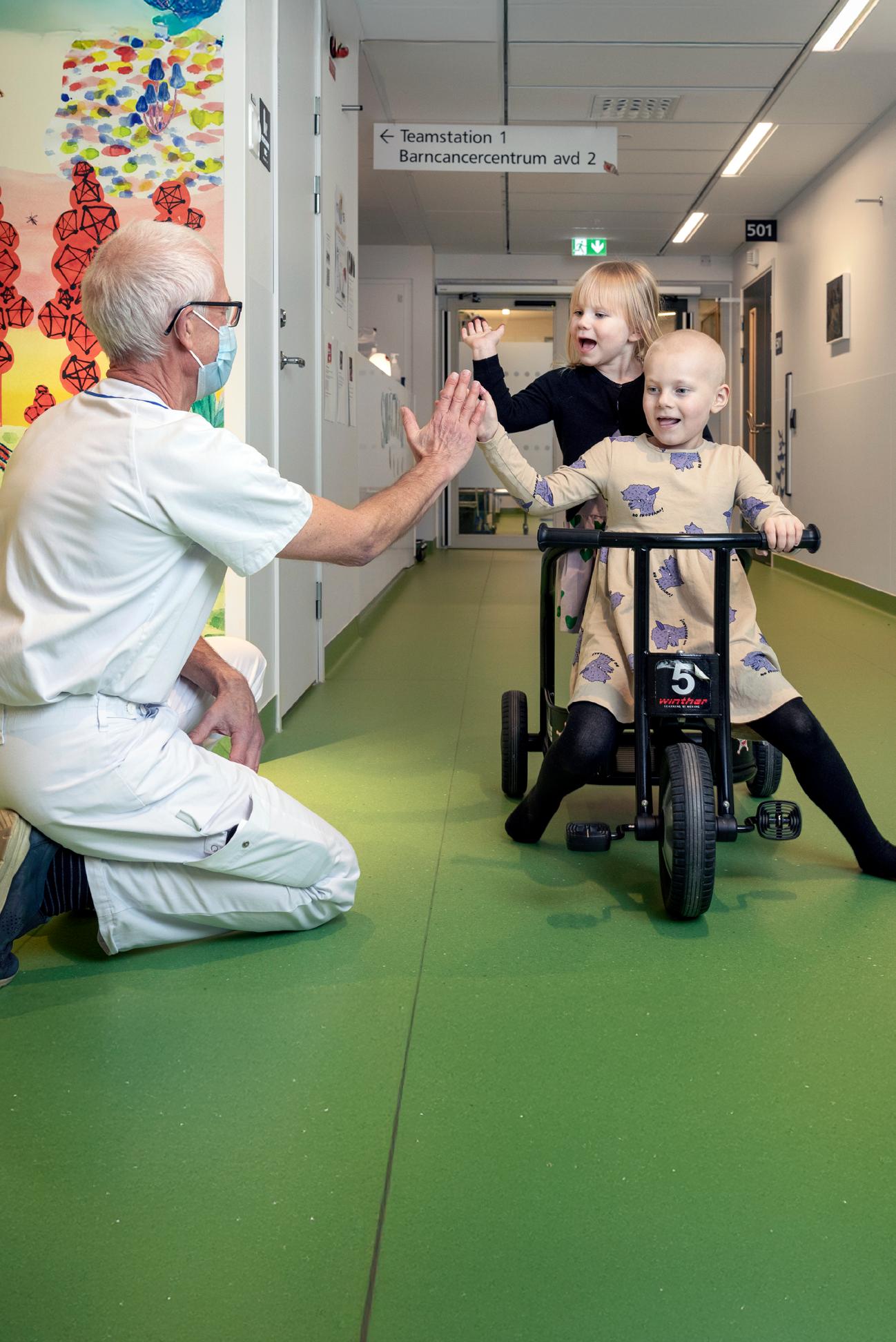
THE SWEDISH CHILDHOOD CANCER FUND INVESTS IN
Can AI help save more children’s lives? The BrainChild project brings together researchers, technology companies, and the Swedish Childhood Cancer Fund with a shared goal: to eradicate childhood cancer using data and advanced technology.
“We believe BrainChild will revolutionize childhood cancer care, not only in Sweden but worldwide,” says Ola Mattsson, Secretary General at the Swedish Childhood Cancer Fund.
In Sweden, 85% of children diagnosed with cancer survive. Internationally, we are ahead of the curve –but 15% of children still lose their lives. And among those who survive, many are forced to live with severe complications from the disease or its treatment.
Survival rates rose sharply for several decades, but have plateaued since the early 2000s. New ideas are needed to fulfill the Swedish Childhood Cancer Fund’s vision: that every child affected by cancer will survive and go on to live a long and healthy life.
“We need to find new ways to treat children with cancer – and for that, we need much more data that we can learn from together,” says David Gisselsson Nord, Professor at Lund University and senior advisor to the Swedish Childhood Cancer Fund.
New answers through advanced AI BrainChild is a new, promising initiative and one of the Swedish Childhood Cancer Fund’s largest undertakings to date. The project aims to leverage AI and machine learning to collect, structure, and analyze healthcare data to improve diagnosis and treatment.
Partners include researchers, the Swedish Childhood Cancer Fund, Microsoft, and the Swedish government. Microsoft is providing secure IT solutions and tools that help researchers quickly identify patterns in how genes, treatments, and outcomes are connected.
“This is one of the most ambitious projects we’ve ever undertaken. And it’s possible because so many
are working toward the same goal,” says Ola Mattsson, Secretary General of the Swedish Childhood Cancer Fund.
Anna Eklöf, Project Manager for BrainChild, adds:
“We believe many of the answers are already out there. The challenge is to gather and structure the data so that the connections become visible.”
Ethics and responsibility


we need to understand why some children respond to them and others don’t. We can only do that by learning from real-world data from real patients,” says David Gisselsson Nord.
AI as an assistant
However, data collection can be sensitive, and personal privacy considerations must be weighed against the benefits of using data for research purposes. Patient safety is crucial. Here, Ola Mattsson is clear:
“There is a justified focus on privacy. But we also believe it is unethical not to use data that could actually save lives,” he says.
David Gisselsson Nord is the clinical lead for one of BrainChild’s first pilot studies, which focuses on combining clinical information with large-scale data. The data comes from just over 500 children in Sweden who were diagnosed with solid tumors and treated between 2021 and 2024.
Survival rates in Sweden are high, but for children who experience a relapse, the rate drops to around 50%. There is a need to replace intensive chemotherapy treatments with more targeted therapies, which often result in fewer side effects and fewer long-term complications after treatment ends.
“To be able to offer new, gentler treatments,
To structure and learn from the collected data, the researchers are working with Microsoft. The researchers are training AI to analyze images and data to detect patterns that even the most experienced pathologist might miss.
New multimodal models specializing in healthcare are under development. This gives researchers and clinicians new opportunities to connect insights from medical records, genomics, and imaging.
“AI can identify patterns that aren’t visible to the naked eye. It’s not about replacing doctors, but about giving us better tools to make the right decisions,” says David Gisselsson Nord.
“We’ve visualized genetic information and survival rates in the same tool. It’s the first time I’ve seen that. And it changes how you understand the disease – suddenly, you can see that some children with the same genetic mutation have survived, while others haven’t. This raises new questions.” What other factors are involved?
The pilot study demonstrates the project’s potential and that it actually works. Now the project is scaling up with more data sources, broader use, and new diagnostic groups. W
4.5
Fund


Increased creativity, greater job satisfaction, time savings, and reduced stress – Uddevalla Municipality’s investment in AI has delivered results beyond expectations.
With support from Copilot and custom-built solutions, everything from meetings to recordkeeping has become more efficient – giving staff more time for what truly matters.
With a clear focus on innovation and practical value, Uddevalla Municipality has made AI a natural part of everyday operations. The municipality was an early participant in Microsoft’s Copilot Early Access Program and has since rolled out AI tools across a wide range of departments.
“It’s definitely an opportunity. We’ve been talking for years about the challenges facing the welfare system, and now they are here. With an aging population and a shrinking workforce, fewer people will be responsible for supporting more individuals. This means we have to leverage technology and develop new approaches to our work,” says Malin Krantz, Municipal Director.
Broad test group and strong engagement
A total of 380 employees across all departments participated in the pilot phase, exploring how Copilot could help in their daily routines. The result was 117 ideas, ranging from simple suggestions to more visionary concepts.
“Many make the mistake of testing only within the IT department, but that doesn’t give a represent ative picture. We wanted to involve everyday users,” says Thore Andersson, IT strategist at Uddevalla Municipality.
Follow-up measurements showed that active users saved an average of 5.5 hours per month, while daily users reported time savings of up to 7.5 hours. Many also experienced increased creativity, job satisfaction, and reduced stress.
One example comes from an environmental inspector who used to return to the office with handwritten notes that had to be deciphered and typed up.
“Now he starts a Teams meeting on-site with recording and transcription enabled. Copilot
summarizes the meeting instantly. That saves time and makes it easier to stay present.”
Uddevalla Municipality faces the same challenges as many others: an aging population and increasing demands for efficiency. Among the successful AI solutions are medication robots that deliver medicine directly to residents and send alerts if something goes wrong – an innovation that both eases the burden on staff and enhances safety.
“Previously, a home visit was required when someone couldn’t manage their medication dispenser. Now, people can remain independent longer with technical support.”
Overarching goal:
Reduce the administrative burden “People still make the decisions, but they now receive structured information more quickly and consistently,” says Thore Andersson.
AI is also improving cybersecurity. Copilot Security supports the IT department by analyzing logs and identifying threats.
“One key to success is the close collaboration between IT and operations, along with bold leaders and talented employees. It’s critical that this development is driven by operations and not just by IT – and we’ve succeeded with that here in Uddevalla,” says Malin Krantz, Municipal Director.
They are now exploring the possibilities of AI agents – specialized assistants that can perform specific tasks, such as approving vacation requests or verifying timesheets.
“The public sector is facing a skills gap. If AI agents can take over repetitive tasks, that’s a positive development.” W

DIGITAL BUSINESS GUIDE:
An AI-powered assistant that answers business owners’ questions 24/7 and links them to the right information on the municipality’s website.
AI AGENT FOR THE CARE HANDBOOK: Social services staff can now search hundreds of PDF documents and receive instant answers, with links to relevant regulatory guidance.
DIGITIZATION OF PERSONNEL RECORDS: Paper-based records are now searchable and easy to access.
SPEECH-TO-RECORD IN HOME CARE: Staff can dictate incident reports directly on their mobile phones, saving time and reducing the risk of errors. “It has truly transformed our work in home care. Staff can focus on providing the best possible care, instead of spending time on administrative tasks. The app also supports staff with dyslexia, who can now dictate their reports instead of typing them,” says Thore Andersson.
Read more about Uddevalla Municipality’s work with Copilot
An agent in Microsoft Copilot is like a smart digital coworker that can help with tasks, answer questions, or automate processes – without requiring you to write all the code yourself. Built with AI, it can operate independently based on the purpose you define.
Imagine an agent that provides customers with instant answers in a chat, automatically compiles reports from various data sources, and guides employees through internal processes such as onboarding or IT support.
The best part? You can build and customize the agent yourself using tools like Microsoft Copilot Studio, Power Platform, or Azure AI Services – depending on what you need it to do.
1. Define the purpose. What will your agent do? Customer support, analytics, or act as a personal assistant? Clarify the goal.
2. Choose the right tool. Microsoft Copilot Studio, Power Virtual Agents, or Azure AI Services – depending on the task.
3. Train and configure. Enter sample data, connect databases, and fine-tune language understanding.
4. Build logic and features. Set rules, integrate with other systems, and customize the agent based on user needs.
5. Test and fine-tune. Try the agent in different scenarios, adjust responses, and optimize performance. Deploy and use! W
Learn more about agents here!

AI can help you summarize long email threads? Copilot can give you a quick summary of your emails in Outlook – no need to scroll through everything yourself.
1. What value can AI offer the public sector?
2. What do you think is required for Sweden to achieve its goal of becoming the world leader in leveraging AI opportunities?

1. “As the population ages and fewer people in the workforce are responsible for a growing share of the elderly, staff time will become increasingly valuable. AI can be used as a tool to support staff and allow them to focus on their core responsibilities. The goal is to reduce administrative burdens so teachers can spend more time teaching, nurses can devote more time to patients, and social workers can focus on people instead of paperwork. With the help of AI, we can also improve decision support, strengthen crisis preparedness, and detect errors or fraud in the system at an early stage.”
2. “Clear political leadership. We need to invest in research and skills development and foster close collaboration with labor market stakeholders. Public-sector organizations must have the courage to lead the way – both as procurers and as users – to drive progress.” W 1. “Greater efficiency, lower costs, and improved quality of life for those affected. For example, AI has been used to reduce fall-related injuries, develop and adapt medications and diagnoses in healthcare, and deliver faster, more accurate analysis of large datasets in other parts of the public sector. AI can also take over more repetitive tasks, provide better decision support, and free up time for public-sector staff to improve services and operations.”

2. “A broad-based knowledge initiative across society on how AI can be applied to realize the benefits of breakthroughs that have the potential to fundamentally transform many sectors. We also need to address major challenges such as transparency, privacy, and risks to individuals, as well as the significant climate and environmental challenges posed by AI.” W
for transport, AI, and digitalization, Liberal Party

1. “AI has strong potential to streamline and simplify work across all levels of the public sector. According to a 2019 report from the Agency for Digital Government, savings could reach SEK 140 billion. These freed-up funds could deliver significant added value in a heavily pressured public sector.”
2. “The AI Commission’s roadmap is important, with its 75 proposals covering everything from increased research to education for all and AI factories for innovation. Here in Sweden, we excel at collaboration, innovation, and adopting new technology. The roadmap, Sweden’s recognized expertise, and broad access to AI testing can help us take a leading position in harnessing AI’s potential.” W

More than 11,000 Ericsson employees can now build custom apps and workflows for everyday tasks – no coding skills required.
The result? Significantly shorter development cycles, higher engagement, and an exciting wave of innovation that is currently sweeping through the Swedish telecom giant.
As technology barriers come down, a wide range of new opportunities is emerging. At Ericsson, thousands of employees are using Microsoft Power Platform to build tailored IT solutions that meet their own needs.
But unlike many other companies using the same tools, Ericsson is doing so within the structure of one of the world’s most advanced software companies. Ericsson already develops complex, world-leading
solutions for mobile communications – and it is precisely this technical expertise and culture that make the initiative so powerful.
The results speak for themselves. In one business unit, Ericsson has successfully reduced software development time from 380 days to just 70. In some cases, apps have been developed in just ten days, and overall, the initiative has already saved hundreds of thousands of production hours.
“Many of our ‘makers’ have never written a single line of code, yet they’re making a real impact. We’re seeing apps for everything from financial management and legal workflows to mentoring tools and production – all created by people who understand the needs of their own departments,” says Richard Richthoff, Head of Product Line Productivity & Collaboration at Ericsson.
With Microsoft Power Platform, every employee – not just developers – can build apps, automate workflows, and analyze data directly in tools like Teams and SharePoint. At the same time, IT retains control over governance and compliance, making it possible to drive innovation without compromising security.

chard Richtho
Richard Richthoff compares the platform to Lego bricks: a modular base that employees can build on to develop Power Apps.
“Employees know their own work better than the IT department does. Now we can share responsibilities: what’s best handled centrally, we manage centrally. What works best close to the users, we leave in their hands,” says Richard Richthoff, noting that the shift has significantly increased employee engagement.

Many of our ‘makers’ have never written a single line of code, yet they’re making a real impact.
The new model represents a paradigm shift in how global IT operations are run – built on trusting employees and giving them greater responsibility. Granting users greater autonomy is the key to driving innovation and boosting productivity.
Our role is to create the optimal conditions that enable this freedom – securely and cost-effectively. Naturally, this shift changes the balance of power, but that’s exactly the point.
“Much of it comes down to having the courage to delegate responsibility – to employees and to managers. If every decision has to go through a manager, nothing moves forward,” says Richard Richthoff.
“The IT department’s role isn’t to build the apps – it’s to understand what it means when others can. It shifts the balance of power a bit – and that’s exactly the point.”
Ericsson has trained and certified thousands of users globally, with support from Microsoft playing a key role in scaling up the effort. The goal is to save one million hours in lead time by 2025 – and with the rise of AI, the company sees even greater opportunities ahead.
“This isn’t a temporary initiative. It’s about empowering every Ericsson employee to help shape the company’s future and make a meaningful impact,” says Richthoff.
“The range and volume of use cases being built on Power Platform are a clear reflection of Ericsson’s culture of innovation. The numbers speak for themselves.” W
Ericsson is a leading provider of mobile communications solutions for telecom providers, enterprises, and the public sector. We deliver high-performance, programmable, and energy-efficient networks that support greater service differentiation. Our enterprise solutions offer superior communications for businesses and advanced network capabilities for application developers.
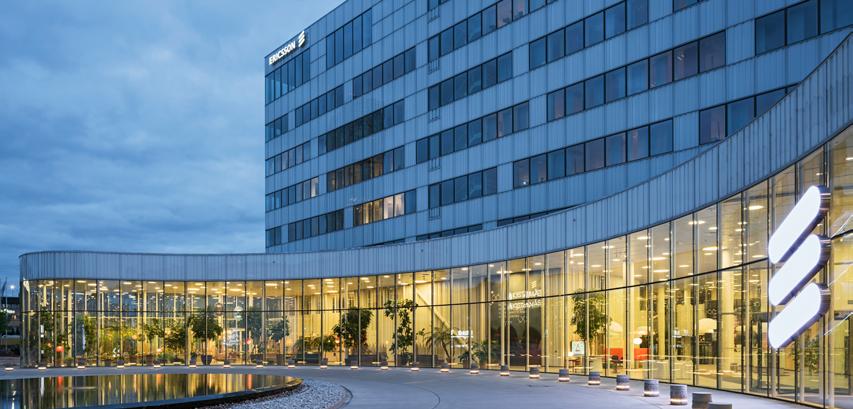
1. What value can AI offer the public sector?
2. What do you think is required for Sweden to achieve its goal of becoming the world leader in leveraging AI opportunities?
MARIA STOCKHAUS
1. “AI can help improve efficiency and deliver better services to all residents. According to a previous estimate from the Agency for Digital Government (DIGG), the figure stands at SEK 140 billion. That number is likely even higher today as research on AI and digitalization continues to advance and expand.”
2. “Political leadership at all levels.”

INSPIRATION AND INSIGHT, RIGHT WHERE YOU ARE.
Scan the QR code to explore Microsoft's seminars, workshops and webinars.
